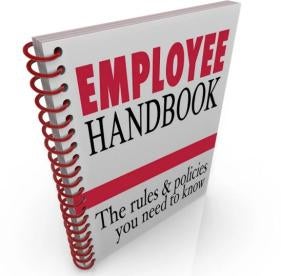The position could expose more putative employers to potential liability under the Fair Labor Standards Act.
In an Administrator’s Interpretation (AI) issued on January 20, the US Department of Labor’s (DOL’s) Wage and Hour Division has again sought to expand employers’ potential liability under the Fair Labor Standards Act (FLSA). Following its July 2015 AI, which sought to limit who can be an independent contractor and thus create more employee-employer relationships, the DOL now seeks to significantly expand the circumstances under which companies can be joint employers. Specifically, even in situations where little or no traditional indicia of control can be shown to exist between two entities, the DOL would require an analysis of the “economic reality” of the situation using factors created decades ago in the context of farm laborers. The DOL does not explain how many of those factors are relevant to a joint-employer inquiry in the 21st century economy. However, its current position could expose more putative employers to potential liability under the FLSA, even if they exercise little to no actual or functional control.[1]
This approach is a significant departure from the tests that courts traditionally used in many jurisdictions and further signals the DOL’s ongoing efforts to hold large companies responsible for functions and decisions they thought they had properly outsourced. With courts’ reaction to the AI uncertain, companies should be on alert to this new potential joint-employer liability.
Traditional Basis for Joint-Employer Liability
The US Supreme Court’s decision in Rutherford Food Corp. v. McComb[2] provides the foundation for contemporary “joint-employer” jurisprudence. Although the Court in Rutherford did not directly address the joint-employer relationship, it made clear that the determination of whether an employer-employee relationship exists does not depend on “isolated factors but rather upon the circumstances of the whole activity.”[3] Building on this concept, circuit courts of appeal have subsequently fashioned their own multifactor tests for determining whether a company could be held liable as a joint employer under the FLSA.
One of the first such cases was Bonnette v. California Health and Welfare Agency.[4] In that case, the US Court of Appeals for the Ninth Circuit established the following test to determine whether a state welfare agency was the joint employer of in-home caregivers: “whether the alleged employer (1) had the power to hire and fire the employees, (2) supervised and controlled employee work schedules or conditions of employment, (3) determined the rate and method of payment, and (4) maintained employment records.”[5] Applying these factors, the court held that the agency was an “employer” under the FLSA because it “exercised considerable control over the nature and structure of the employment relationship.”[6] The Ninth Circuit and several of its sister circuits have since added additional factors to the Bonnette test to account for the so-called “indirect” control that putative employers may exercise over workers.
Although courts continue to apply varying factors, including some aimed at “economic dependence” versus traditional control, most jurisdictions still maintain that control over an employee—whether directly by power over physical performance or indirectly through other means—is necessary to impose joint-employer liability under the FLSA.[7] Other jurisdictions apply a more flexible, multifactor factor test, and still others have no prevailing standard. There is, therefore, no national consensus about the factors to consider in determining joint employment under the FLSA.
The DOL’s New Standard[8]
Against this backdrop, in the context of vertical relationships, the DOL suggests that courts—even those with well-established standards—should abandon their respective joint-employer tests for a single, uniform list of “economic reality” factors. Before addressing these factors, however, the DOL posits that joint employment is automatically established where an “intermediary employer (who may simply be an individual responsible for providing labor) is actually an employee of the potential joint employer.” Under these circumstances, according to the DOL, “all of the intermediary employer’s employees are employees of the potential joint employer too, and there is no need to conduct a vertical joint employment analysis.” [9] This concept may undercut many companies’ efforts to limit their responsibility for nonemployees by contracting only with incorporated vendors that would retain exclusive control over their own workers.
Under the DOL’s proposed standard, which as an AI does not have the binding effect of a DOL regulation, courts are asked to assess the economic reality of any potential joint-employment situation. And, according to the DOL, courts should do so, in part, using factors promulgated in the 1997 amendments to the Migrant and Seasonal Agricultural Worker Protection Act (MSPA).[10] Those factors are:
-
whether the purported employer directs, controls, or supervises workers;
-
whether the purported employer has the power to hire, fire, and modify the employment conditions, including rates of pay;
-
the degree of permanency and duration of the parties’ relationship;
-
the extent to which the service rendered by the workers is repetitive or rote by nature;
-
whether the work performed is integral to the overall business of the purported employer;
-
whether the work is performed on the putative employer’s premises; and
-
whether the responsibilities performed by the putative employer are those commonly performed by employers.[11]
The AI does not explain how these factors, created decades ago in the context of migrant farm labor, apply in today’s very different electronic, service-based economy. For example, an owner of a piece of property who wishes to build and own a building may hire a contractor to build it. The owner may have absolutely no connection to or control over the work being done, but certainly the workers could be on the project for years, their work is integral to the building being built, they are performing alleged manual work, and they are doing so on premises owned by the owner. If the contractor chooses to generate income only from that job, one could allege that the contractor is dependent economically on the owner. But under no current test would those facts come close to being a joint-employment scenario.
Indeed, the test, as articulated by the DOL, is more liberal than perhaps any other joint-employer standard applied anywhere in the United States, as it is based on the DOL’s broad view that joint-employer liability may be imposed based solely on “economic dependence” and seemingly even if there has been no showing of traditional control. The DOL’s approach is a novel one. Indeed, it recognizes that not only has no court ever “explicitly relied” on the MSPA’s joint-employer test in the FLSA context, it admits that one federal circuit court has expressly declined to adopt these factors.[12]
The MSPA’s multifactor test also finds no support in the FLSA regulation covering joint employment. That regulation sets forth three circumstances under which joint-employer liability may be found: (1) where the worker provides services simultaneously for two companies, (2) where the direct employer works “in the interest of” the prospective employer with respect to the worker, and (3) where the prospective employer controls—either directly or indirectly—the worker’s employment.[13] Ignoring completely the latter two situations, the DOL now deems this regulation applicable only in instances where “two (or more) employers each separately employ an employee and are sufficiently associated with or related to each other with respect to the employee.”
The DOL’s proposed test therefore marks a drastic deviation from current regulatory standards. It also is incompatible with the contemporary concept of joint employment. As noted above, certain factors suggested by the DOL have very little, if any, relevance to joint employment. For instance, although the permanency and duration of the relationship between the parties may shed some insight about whether a particular worker is an employee or an independent contractor in the first place, it has no bearing on the joint-employer relationship.[14] Logic dictates that a general contractor has no more control over its subcontractor’s long-tenured employees than it does over those who have been recently hired. Nor are the subcontractor’s veteran employees any more economically dependent on the contractor, absent some other indicia of control.
The same is true for employees who perform unskilled, rote, or repetitive tasks. If a company has intentionally outsourced a task performed by unskilled laborers, and thereby relinquished all control over the individuals performing the work, it defies reason that such workers would be any more economically dependent on the putative joint employer than highly skilled independent contractors simply by virtue of the nature of tasks that they perform.
Also noteworthy is the DOL’s emphasis on work “integral” to the putative joint employer’s business, which is dubbed “a hallmark of determining whether an employment relationship exists as a matter of economic reality.” In certain industries, this factor almost always falls in favor of joint employment, but the role that outsourced work may play in a putative employer’s business bears no direct relation to the economic dependence of the workers on the putative employer.
Although likely not intended, the DOL’s proposed factors may not be disruptive for some putative employers. For example, in some industries, some level of regulatory or statutory control cannot be avoided. However, if the focus is on economic dependence and that cannot be shown, any actual control that a company exercises could be rendered less significant under the DOL’s analysis. The DOL also concedes that when evaluating the control exerted over worker performance, “a reasonable degree of contract oversight” may not trigger joint employment.
Irrespective of any unintended benefits to putative employers, employers should carefully review and fully understand the DOL’s motivation for the new standard. This is particularly true given that the DOL suggests that by purportedly expanding the scope of joint-employer liability to “larger and more established” companies “with a greater ability to implement policy or systematic changes,” the DOL may achieve greater “statutory coverage, financial recovery, and future compliance.” This seems to suggest that entities with deeper pockets, regardless of control, may be targets if such entities can influence a policy or bring about change in an employment setting. This concept, however, runs counter to the traditional joint-employer concept under which a larger entity can avoid liability by not making any policy or other decisions and by extricating itself from any compliance role.
Conclusion
Although there is uncertainty about whether and how judges will receive the DOL’s new standard, the plaintiffs’ bar may seize upon language in the AI to argue for new methods for finding joint-employment relationships, and some courts may adopt the arguments. The DOL and private plaintiff litigants may also attempt to capitalize on the new AI by seeking to involve the deeper pockets of “upstream” companies in employment lawsuits. These possibilities are real and a continuation of the Obama administration’s attempt to fight outsourcing and other nontraditional forms of work.
Administrator David Weil has spoken many times about what he calls the “fissured workplace,” openly advocating that larger employers should be responsible for ensuring the compensation and economic well-being of workers whom they do not employ. The new AI “guidance,” coming on the heels of the National Labor Relations Board’s significant and unprecedented expansion of its own joint-employer test (see our LawFlash on that decision), means that many companies now face potential worker-related liability that they sought to eliminate by outsourcing certain functions. With these risks in mind, companies must prepare to defend against potential suits and reevaluate their vendor relationships with the view that the DOL’s new “economic realities” test could be applied. As with the DOL’s recent interpretation regarding independent contractors, this current guidance will, at a minimum, provide additional ammunition for those seeking to hold companies liable under the FLSA.
[1] The DOL’s AI addresses joint-employment liability under federal law, specifically the FLSA. It does not address state law, which can vary dramatically. California Labor Code § 2810.3, for instance, imposes strict liability on “client employers” for wage payments and workers’ compensation benefits owed to employees of a “labor contractor” who “performs labor within the client employer’s usual course of business.”
[2] 331 US 722 (1947).
[3] Id. at 730.
[4] 704 F.2d 1465 (9th Cir. 1983).
[5] Id. at 1470.
[6] Id.
[7] See, e.g., In re Enterprise Rent-A-Car Wage & Hour Empl. Practices Litig., 683 F.3d 462, 468 (3d Cir. 2012) (“[T]he alleged employer must exercise ‘significant control.’”); Courtland v. GCEP-Surprise, LLC, No. 12-00349, 2013 WL 3894981, at *3 (D. Ariz. July 29, 2013) (recognizing that company “is not a joint employer unless it has significant control over the employment relationship”).
[8] In addition to the AI, the DOL simultaneously issued a new Fact Sheet on Joint Employment, a set of Frequently Asked Questions, and other related materials. Like the AI, none of these materials is binding upon, nor is any deference required to be afforded by, any court.
[9] “Vertical joint employment” has been defined by the DOL as a situation in which an intermediary entity appears to have an employment relationship with an employee, but “economic realities” suggest or show that the employee may be dependent upon, and thus also employed by, the additional entity. The AI also provides guidance regarding “horizontal joint employment,” which describes the situation where two putative employers have some common ownership or other relationship or association.
[10] 29 C.F.R. § 500.20(h)(5)(iv).
[11] 29 C.F.R. § 500.20(h)(5)(iv).
[12] See Layton v. DHL Exp. (USA), Inc., 686 F.3d 1172 (11th Cir. 2012).
[13] 29 C.F.R. § 791.2.
[14] See Aimable v. Long & Scott Farms, 20 F.3d 434, 444 (11th Cir. 1994).







 i
i

